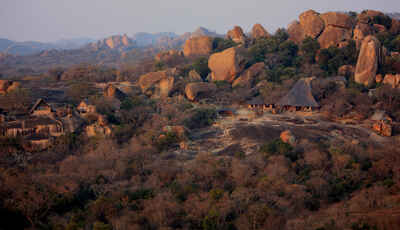About Big Cave Camp
Blending in amongst the boulders on top of a large granite whaleback, the A-frame chalets of Big Cave Camp ...
... enjoy stunning views across the rugged terrain of Matobo Hills National Park. It’s a relatively simple property, offering comfortable if not stylish accommodation, and both cultural and wildlife activities.
After some difficult years, Big Cave Camp is now looking better after much-needed refurbishment. The camp offers a low-cost way to see the Matobo Hills, and a unique chance to mountain bike across the granite hills. However, the service and style of the camp may feel slightly below par when compared with other properties in Zimbabwe.
Our view
After some difficult years, Big Cave Camp is now looking better after much-needed refurbishment. The camp offers a low-cost way to see the Matobo Hills, and a unique chance to mountain bike across the granite hills. However, the service and style of the camp may feel slightly below par when compared with other properties in Zimbabwe.
Accommodation
7 A-frame chalets
Children
8 and above
Open
All year
Activities

4WD Safari

Birdwatching

Cultural excursion

Guided walking safari

Mountain biking

Private activities

Self-guided walking
Traveller reviews of Big Cave Camp
2 real, un-edited reviews from Expert Africa's travellers.
Arrived 17 May 2025, 3 nights
"Big Cave Camp review"
Overall rating: Excellent
Arrived 26 May 2019, 3 nights
"Warmhearted place offering awesome walks"
Overall rating: Good
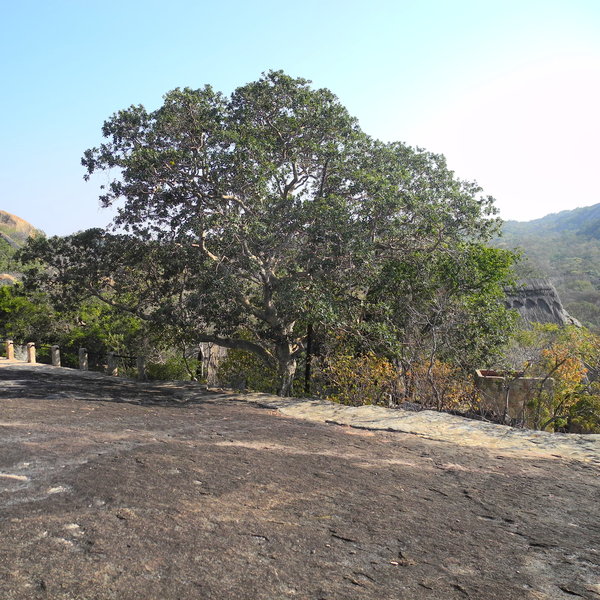
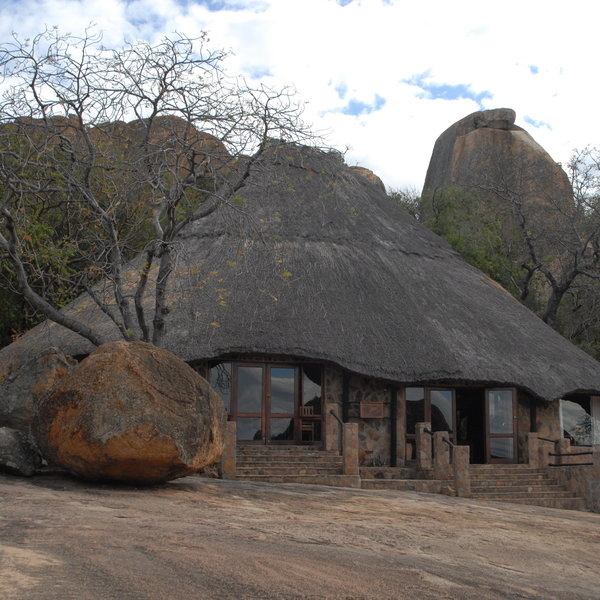
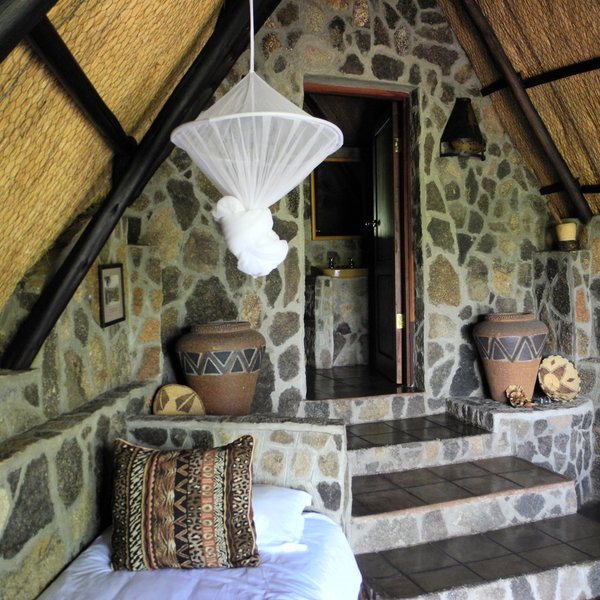
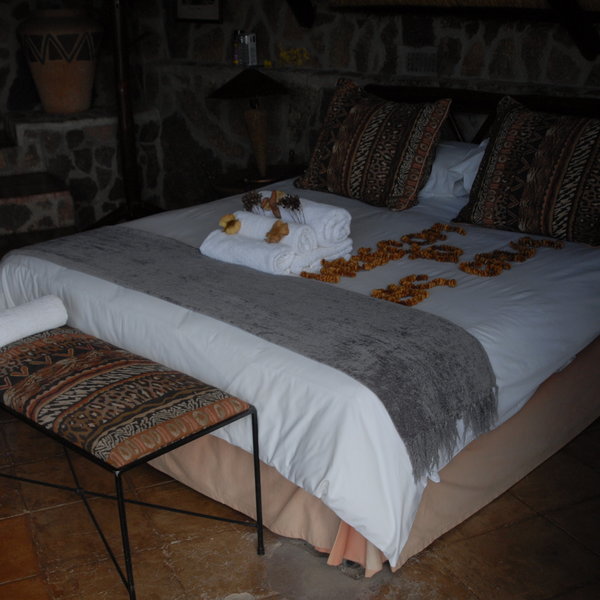
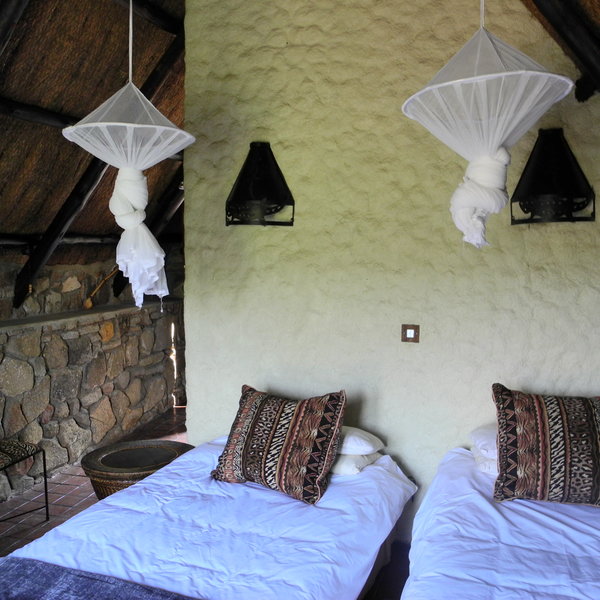
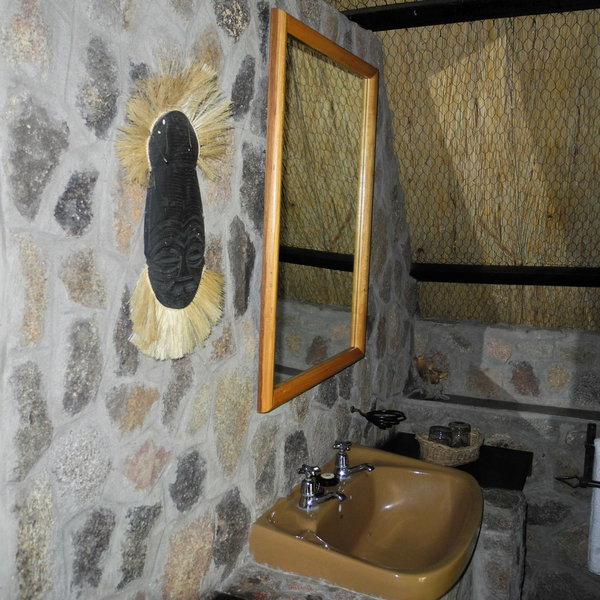
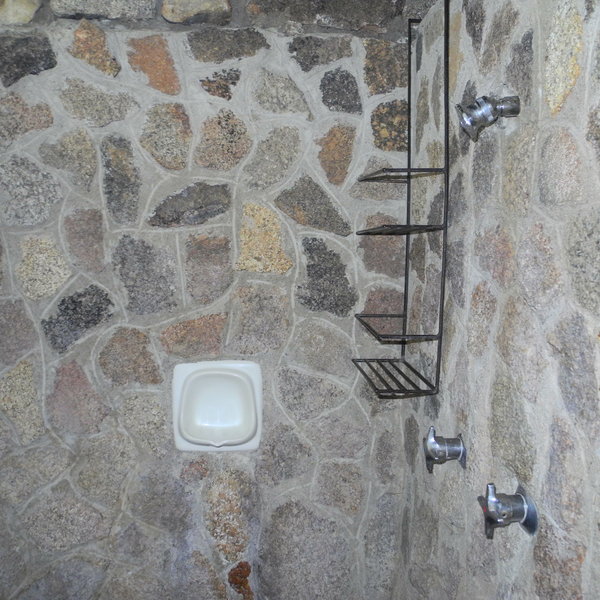
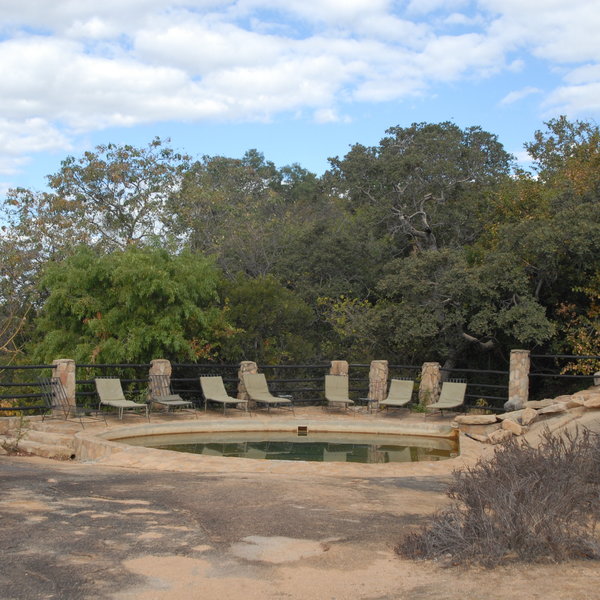
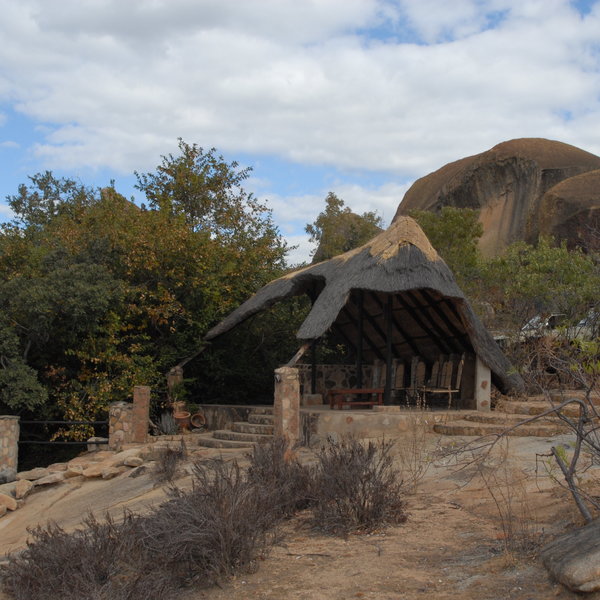
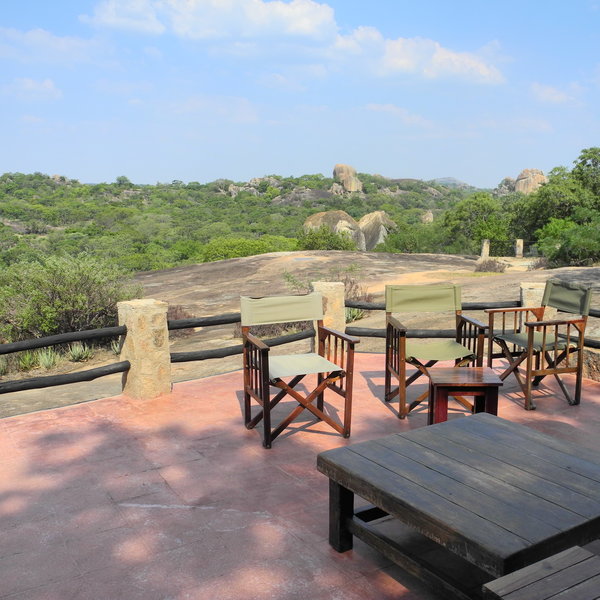
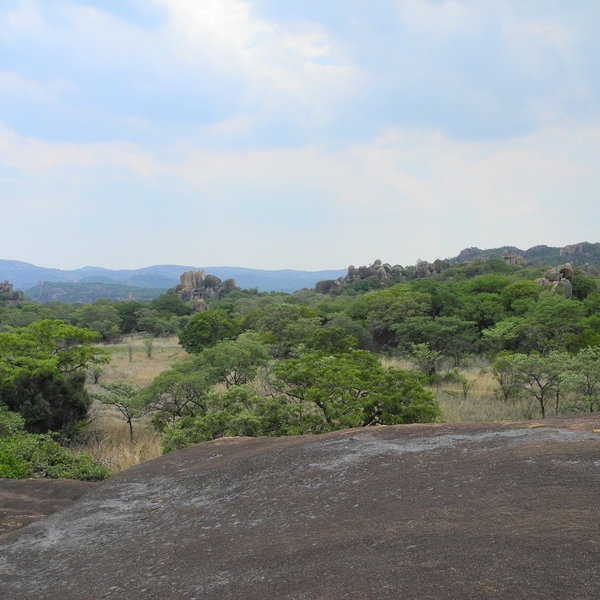
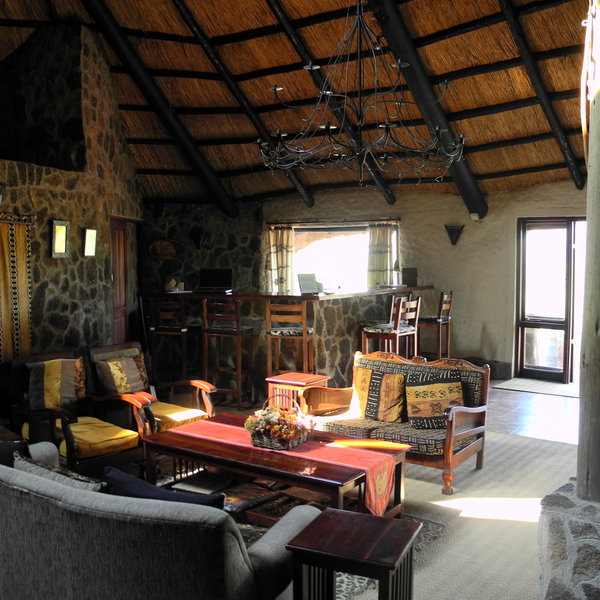
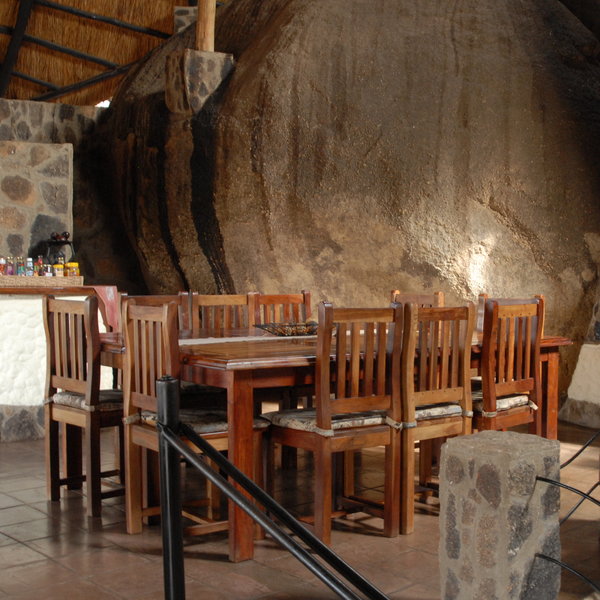
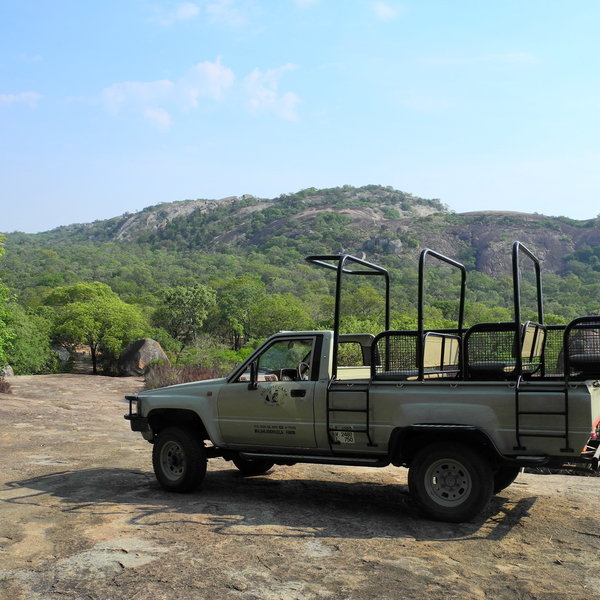
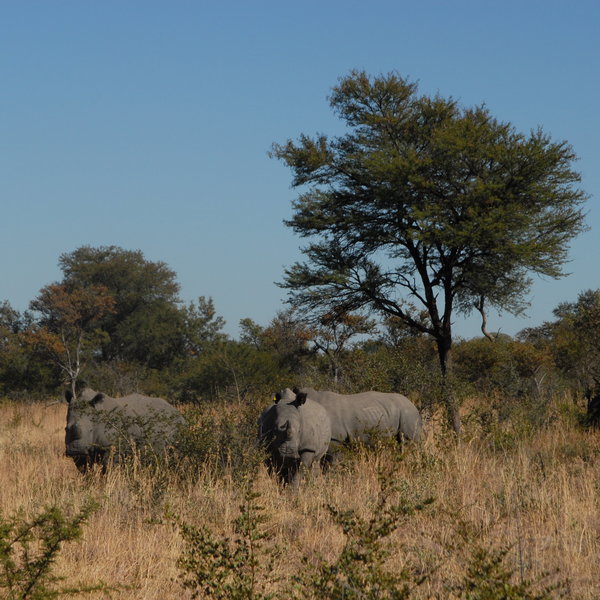
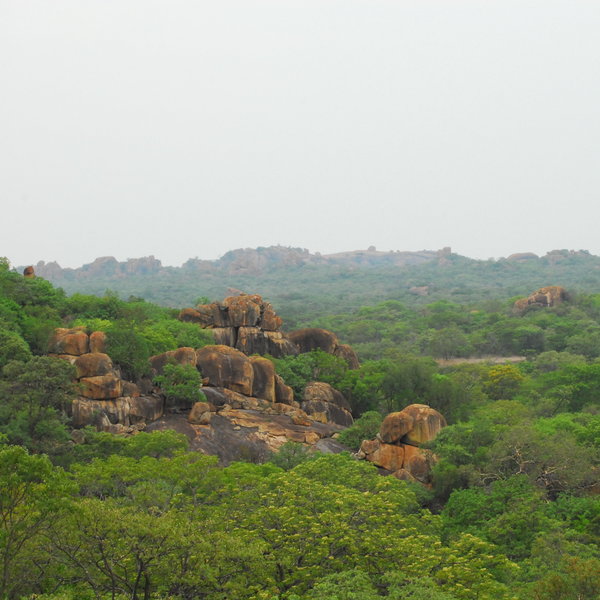
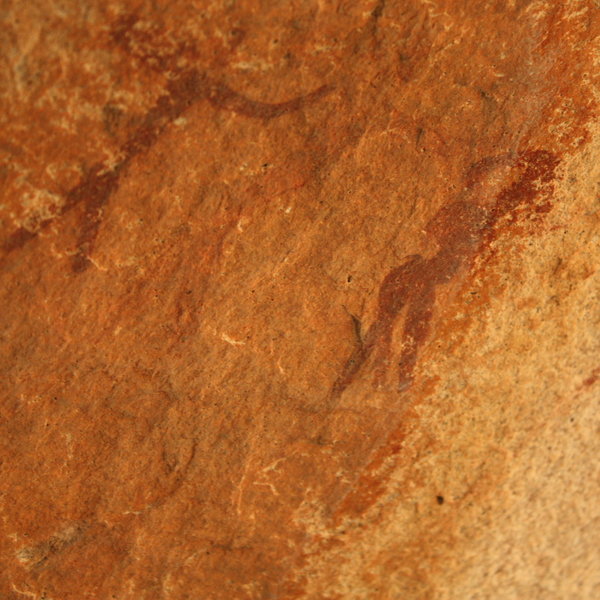
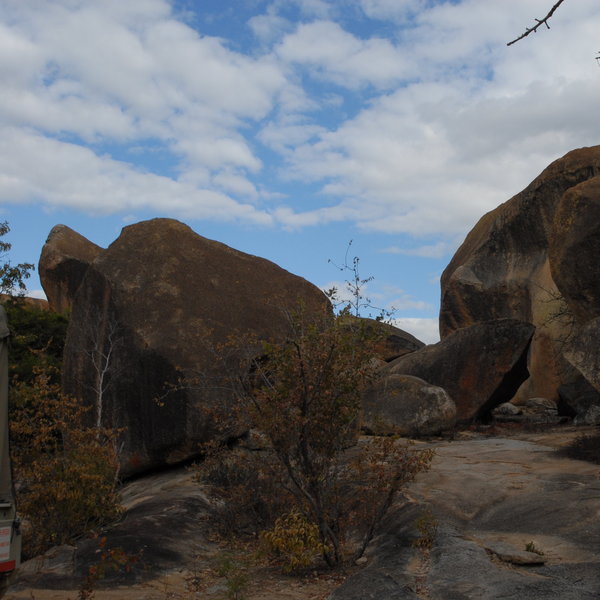
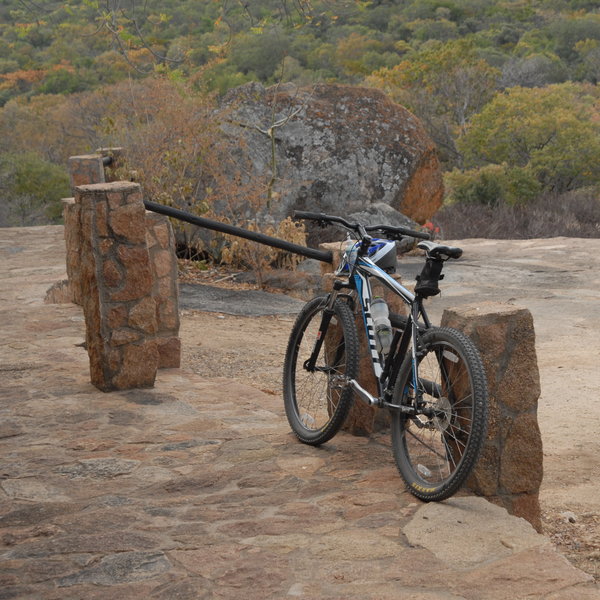
Expert Africa's gallery
When we travel we take lots of photos ourselves to give you a real and un-edited view of the safaris. See our 29 pictures and 1 videos of Big Cave Camp to get the candid view.
View galleryBig Cave Camp: Our full report
Blending in amongst the boulders on top of a large granite whaleback, the A-frame chalets of Big Cave Camp ...
... enjoy stunning views across the rugged terrain of Matobo Hills National Park. It’s a relatively simple property, offering comfortable if not stylish accommodation, and both cultural and wildlife activities.
Big Cave's seven A-frameen-suite chalets – a triple, four twins, one family chalet and a honeymoon suite – are solidly built with stone walls and timber frames. Thatched roofs and tiled floors help to keep them cool in summer and warm in winter, and outside each is a balcony with metal chairs and a wooden table. The views from the front of the chalets are fantastic, especially in late afternoon when the sun hits the rocks.
Zimbabwe has been through some tough times in recent years, and on previous visits we found the rooms at Big Cave to be in need of urgent renovation. However, on our last visit in May 2016 we were pleased to find that most of the chalets had had substantial upgrades, with just a few remaining to be renovated soon. The chalets are now functional and comfortable, and while they may not be as stylish as one might expect from a lodge in Botswana or Zambia, Big Cave doesn’t share the same price tag as these.
In addition to the chalets, Big Cave has a large campsite behind the main lodge. In recent times , the camp has survived mainly on business from overland trucks that pass through Zimbabwe on their journey between Cape Town and Nairobi or Cairo, though this is beginning to change.
The main area at Big Cave Camp has a natural rock pool with a sundeck, a perfect spot to relax after a day exploring Matobo Hills National Park. A well-stocked teak bar, comfortable lounge and communal dining area are incorporated into the ‘Leopard's Lair’, which features a large boulder as a centrepiece. Before dinner, guests are invited for drinks around a campfire in a cave-style boma, softly lit by lanterns. The lodge also has its own small library, and a pool where cold drinks are served.
Wildlife in the UNESCO World Heritage-listed Matobo Hills National Park has been affected by poaching in recent decades. While game-viewing drives and walks are possible from Big Cave, their focus is less on big game than in other Zimbabwean national parks, and they tend to concentrate as much on the landscape as they do on wildlife. However, a closely monitored population of white and black rhino live in the park, and it’s possible to reliably track these on foot. We did not experience the quality of the guiding on our most recent visit, but when members of the Expert Africa team stayed at Big Cave in 2010 and 2011 they found the standards of guiding to be variable.
There are many rock paintings in Matobo Hills National Park, and even some on Big Cave's own property, and guests who want some cultural activities can visit ancient Khoisan sites on foot or by 4WD. One of the most popular sites is Nswatugi Cave, with its red and gold animal paintings, which can be visited in conjunction with Cecil Rhodes' grave at World's View.
For more active travellers, Big Cave has a few well-maintained mountain bikes, with cyclists permitted to ride both through the national park and on Big Cave property. Big Cave has a 5km and a 15km route across its granite hills, and when camp owner Dave Waddy – a keen mountain biker himself – is in camp, he can guide enthusiasts along some of his favourite single tracks and trail rides in the area.
Activities
4WD Safari
Birdwatching
Cultural excursion
Guided walking safari
Mountain biking
Private activities
Self-guided walking
Families & children
- Attitude towards children
- Big Cave welcomes children of all ages.
- Property’s age restrictions
- None
- Special activities & services
- None
- Equipment
- None
- Generally recommended for children
- Big Cave has a family friendly atmosphere in camp, and welcomes younger children. However, most of the activities in the area involve hiking and other forms of physical exertion, so only older children will be able to benefit from everything the park has to offer.
- Notes
- This area doesn't have elephant, buffalo or lion – but there is a very healthy leopard population and both snakes and scorpions abound. Parents must therefore be vigilant at all times.
Food & drink
- Usual board basis
- Full Board & Activities
- Food quality
- On a previous visit to Big Cave we were served good, hearty food which, while not cordon bleu cuisine, was very acceptable.
Breakfast was a cooked option including the usual eggs, bacon and sausages as well as a continental buffet offering miniature pancakes, toast, cereals and fruit.
For lunch we had chicken wraps with a walnut salad and freshly baked bread.
Dinner was a starter of pumpkin soup, followed by beef in a red-wine sauce accompanied by rice and roast potatoes. Dessert was a very nice crème brûlée. - Dining style
- Group Meals
- Dining locations
- Indoor and Outdoor Dining
- Further dining info, including room service
- No
- Drinks included
- Soft drinks and wines, spirits and beers are included in the price, but high-end liqueurs, champagne and imported wines (except most South African wines) and spirits are not.
Clean drinking water is provided in camp, and bottled water is available upon request
Our travellers’ wildlife sightings from Big Cave Camp
Since mid-2018, many of our travellers who stayed at Big Cave Camp have kindly recorded their wildlife sightings and shared them with us. The results are below. Click an animal to see more, and here to see more on our methodology.

100% success

100% success

100% success

100% success

0% success

0% success

0% success

0% success

0% success

0% success

0% success

0% success

0% success

0% success
Getting there
- Location
- Matobo National Park, Zimbabwe
- Ideal length of stay
- 2 nights
- Directions
- Self-drive or fly to Bulawayo and transfer by road to lodge, a 30 minute drive away.
- Accessible by
- Self-drive or Fly-and-Transfer
Communications
- Power supply notes
- Mains electricity with a back-up generator.
- Communications
- There is limited cellphone access at Big Cave. WiFi is available in the main area at an extra cost.
- TV & radio
- No
- Water supply
- Mains
- Water supply notes
- All bathrooms are fully plumbed in with hot and cold water.
Health & safety
- Malarial protection recommended
- Yes
- Medical care
- The nearest doctor is in Bulawayo, about 30 minutes’ drive from camp.
- Dangerous animals
- High Risk
- Security measures
- None
- Fire safety
- There are fire extinguishers in the main area.
Useful info
- Disabled access
- Not Possible
- Laundry facilities
- Included
- Money
- None
- Accepted payment on location
- Big Cave accepts payment in US dollars cash only; credit or debit cards cannot be used.
Plan and book your trip with Expert Africa
All of our trips are tailor-made, so we'll always adapt them to suit you. Talk to an Expert and let us plan and arrange your perfect trip.

Talk to an Expert
Call or email us now! We’ll match you with the Specialist in our team who is best suited to help you. Then together we can start planning your trip.

Set up your itinerary
Based on our experience and your ideas, your specialist will create a detailed, costed itinerary. We’ll refine it together, until we have a trip that you’re perfectly happy with.

Prepare for your trip
The same Specialist will make the seamless arrangements for your trip, send you detailed travel documents, and be available to answer any questions before you depart.

Travel with peace of mind
After you set off, you’ll be cared for by our partners in Africa, most of whom have worked with Expert Africa for decades. And if you ever need us urgently, we’re available 24/7.

When you return
We love to learn about your trip, and so will always be grateful if you’ve the time to give feedback to your Specialist when you return.
Big Cave Camp's location
Look closer at the environment and surroundings of Big Cave Camp.
Other lodges in Matobo National Park
Alternative places to stay in this same area.
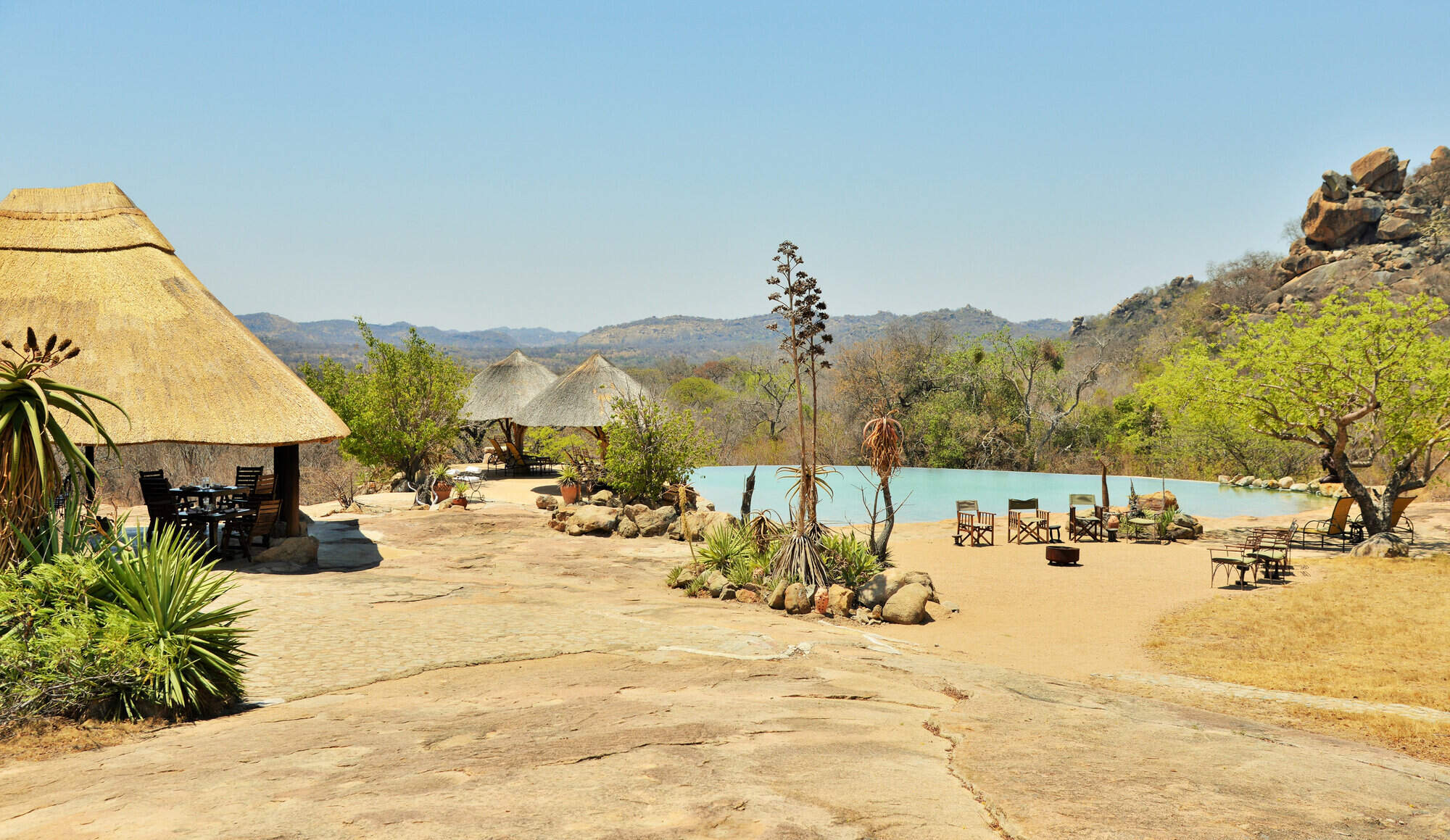
Amalinda Lodge
Imaginatively built into the massive granite kopjes of the Matobo Hills, Amalinda offers unique scenery, layered with history, and rhino tracking.
When to go to Matobo National Park
Our month by month guide: What it's like to visit Big Cave Camp in Matobo National Park
Jan
Feb
Mar
Apr
May
Jun
Jul
Aug
Sep
Oct
Nov
Dec
Zimbabwe in January
January falls in the middle of Zimbabwe’s rainy season and is the wettest month of the year. Heavy rainfall occurs most days, flooding seasonal rivers and waterholes, with the occasional sunny spell.
With the high levels of precipitation the wildlife in the national parks becomes widely dispersed, taking advantage of the abundance of food and water, and is easily hidden by the thick, green bush.
While sightings of larger animals are possible, and many species drop their young at this time, game viewing is often sparse. However, many migratory species of bird arrive in Zimbabwe making it a peak month for birding.
The rains create incredibly sticky mud in Mana Pools National Park, preventing access and causing camps to close for the season. The majority of the camps in other parks remain open, with low rates attracting a smattering of visitors.
- Peak of the rainy season: hot & humid with heavy rain most days
- Bush exceptionally thick and green, with poor game viewing
- Species such as impala drop their young
- All camps in Mana Pools closed
- Very few visitors, and low rates at open camps
Our view
A time to avoid if possible
Weather in January
Zimbabwe in February
February remains well within Zimbabwe’s rainy season. Although total rainfall drops, relatively short thunderstorms can still be expected most afternoons. On the plus side, there is a greater chance of some sunshine in-between.
Much of the country remains waterlogged, closing access to Mana Pools and severely restricting walking safaris in other parks. While game drives and canoeing remain an option, the abundance of water disperses animals, and thick grass can make it difficult to spot larger species, but birding remains excellent. Conversely, this is a great time of year to view the landscape, and is excellent for photographers. Sporadic cloud cover and clear air can make for some spectacular sunsets too, particularly over Lake Kariba and the Zambezi River where the reflections off the water add to the beauty.
- Generally wet with frequent thunderstorms & hot humid days
- Poor wildlife viewing due to dispersed animals & thick bush
- Clear air, green landscapes & exceptional sunsets
- All camps in Mana Pools closed
- Very few visitors & low rates at camps that are open
Our view
This is not a great time to visit
Weather in February
Zimbabwe in March
March is the final month of Zimbabwe’s rainy season, when the rains start to trail off and sunny days become the norm. However, some days the clouds can still build, breaking into thunderstorms in the afternoon.
Mana Pools remains closed throughout the month but the majority of camps in Hwange, Matusadona and Gonarezhou remain open. Here, the landscape is green and alive, with migrant species of birds taking advantage of the abundant insect life. Larger animals remain elusive though, and walking safaris remain restricted.
By this time of year, the rains have normally trickled down to the Zambezi River and the flow of water over the Victoria Falls starts to increase, but without kicking up too much spray to obscure the views.
- Last month of the rainy season: hot, humid days with occasional storms
- Lush vegetation means good birding, but poor game viewing
- Views of the Victoria Falls improve
- All camps in Mana Pools closed
- Open camps have few visitors & low rates
Our view
This is not a great time to visit
Weather in March
Zimbabwe in April
April marks the end of Zimbabwe’s rainy season and the end of summer. Clear skies are the norm, with just the occasional shower. Temperatures start to drop, failing to reach 30ºC most days and dropping down to around 10ºC at night.
As the rain fades the landscape starts to dry out. While the vegetation remains thick and green, the soil in Mana Pools dries enough for camps to open, and the only camps to remain closed are the most remote bushcamps in Hwange. Although viewing of larger animals remains tricky, the improved weather starts to draw back visitors, as do prices significantly below those in the peak season.
The Zambezi River and flow of water over the Victoria Falls is at its highest, although large amounts of spray diminish views of the waterfall itself.
- Transitional period, with much lower rainfall & falling temperatures
- Wildlife is still dispersed & hard to see, but sightings improving
- Views of the Victoria Falls often obscured by spray
- Camps in Mana Pools open
- Visitors start to return & camps increase their rates
Our view
A good time to visit, with pros & cons
Weather in April
Zimbabwe in May
The first month in the dry season, May is also Zimbabwe’s first month of winter. If the rains are particularly late in a given year, you may catch the odd shower, but you can expect clear and sunny days the majority of the time. While it’s warm in the daytime, temperatures drop to single digits at night, so bring a warm jumper and gloves for early morning drives.
With the rain having cleared the air, the sky is bright blue, and it’s the best time of year for photography.
Even the most remote camps in Zimbabwe are now open. With the lack of rainfall, vegetation dies back significantly, and seasonal rivers return to sand. Not only does this open up the possibility of walking safaris, but wildlife viewing becomes much more reliable.
- Start of the dry season, with milder days and cold nights
- Game viewing significantly improves as vegetation dies back
- Vegetation starts to turn from green to brown
- Best time for photography with crystal clear air
- Visitors start to return; all camps open & rates increasing
Our view
A very good time to visit
Weather in May
Zimbabwe in June
During June you can virtually be guaranteed of dry and sunny days, although temperatures continue to drop, and can get close to freezing at night in Hwange National Park. Jumpers, jackets and gloves are strongly recommended for early mornings and evenings.
The opportunities for wildlife viewing improve throughout the month as the landscape rapidly dries, and the animals start to gather on the banks of the Zambezi River and around Hwange’s waterholes.
Water levels in the Zambezi River start to drop, reducing the amount of spray kicked up at the Victoria Falls and greatly improving visibility, but still allowing a full curtain of water to cascade over the edge.
- Middle of winter, with night-time temperatures close to freezing
- Game viewing significantly improves throughout the month
- Views of the Victoria Falls are at their best
- Noticeable increase in visitor numbers
- Camps considerably more expensive
Our view
A very good time to visit
Weather in June
Zimbabwe in July
July sits in the middle of Zimbabwe’s dry season. Although it’s warm at midday, temperatures are generally cold and in Hwange it’s been known to drop below freezing at night, with the lower-altitude Mana Pools feeling a bit warmer.
With wildlife clustering around the few remaining waterholes, sparse vegetation, and some of the best views of the Victoria Falls, this is one of the most popular times to travel, with camps charging peak season rates to reflect this. That said, visitor numbers to the country in general remain low, and outside of the Victoria Falls it’s rare for any areas to feel crowded.
- Middle of the dry season with almost no chance of rain
- Clear sunny days, but very cold nights
- Wildlife viewing good; game drives and walking safaris unrestricted
- Views of the Victoria Falls at their best
- Camps charging peak season rates
Our view
A very good time to visit
Weather in July
Zimbabwe in August
While August is the end of winter and temperatures are starting to creep up, mornings and nights are still cold, and game drives in open vehicles can feel particularly chilly. Well into the dry season, the landscapes will have mostly transformed from green to brown and wildlife viewing in Zimbabwe’s national parks is approaching its best. Due to dust kicked up into the atmosphere and smoke from bush fires you may start to notice a haze on the horizon, but this doesn’t significantly impact photography.
August is one of the most expensive months, and the pleasant weather and decent game viewing attracts lots of visitors. While the national parks rarely feel crowded, Victoria Falls accommodation can sell out a year in advance.
- Warm, sunny days but cold mornings & nights; almost no chance of rain
- Wildlife viewing nearly at its best
- Landscape turns brown, & an atmospheric haze develops
- All camps charging peak season rates
Our view
Fantastic: the very best time to visit
Weather in August
Zimbabwe in September
Temperatures in September rarely drop below 15ºC, but are yet to reach the oppressive highs of summer. It will normally have been five months since the last drop of rain, so antelope and elephants cluster around whatever water remains, with predators never too far away.
The landscape is very brown, and the haze building on the horizon takes some of the colour out of the sky, so while animal subjects are plentiful, the background is not ideal for photography.
The combination of incredible wildlife viewing, hot and sunny weather, and cheaper flights outside of the school holidays make this the most popular time of year to travel, and availability at the camps can become limited up to a year in advance.
- The best month for weather, with a pleasantly warm temperature range
- One of the best months for game viewing
- Victoria Falls starting to dry but still impressive on Zimbabwean side
- All camps are charging peak season rates
- Most popular time to travel, & space can be limited
Our view
Fantastic: the very best time to visit
Weather in September
Zimbabwe in October
October is the last month of the dry season with little chance of rain but building humidity. While the higher elevation of Hwange National Park limits temperatures to the 30s Celsius, they can easily top 40ºC in Mana Pools.
With little vegetation or water, wildlife is drawn to the few remaining water sources and viewing is at its best; visitors who brave the heat can be rewarded with some exceptional sightings, although haze in the air diminishes photos. Maximum visibility and dense wildlife concentrations can also make for very rewarding walking safaris, although the heat can make them uncomfortable.
Water levels in the Zambezi at the Victoria Falls drop significantly, and large stretches of the waterfall are a dry cliff-face – although it never dries completely. Camp rates remain at their peak, but visitor numbers drop as people avoid the heat.
- Last month of the dry season; very hot with building humidity
- Wildlife viewing at its very best
- Dust & smoke in the air diminish photographic opportunities
- Victoria Falls starting to look very dry
- Camp rates remain at their peak
Our view
A very good time to visit
Weather in October
Zimbabwe in November
November is a transitionary period, with high temperatures and humidity. While they can’t be predicted with any precision, the first rains normally arrive halfway through the month, in the form of thunderstorms lasting a few hours each day.
Early November is a popular time to travel as the camps drop their rates, so if you’re lucky you can get peak-season game viewing at low-season rates. This is a gamble though as if the rains do arrive, animals are no longer limited to a few dangerous waterholes and will disperse into the bush. While all the camps in Mana Pools intend to remain open, the rains can make the airstrips unusable so you may find yourself moved to a different park, a risk that increases through the month.
- Typically the start of the rains in Zimbabwe
- Temperatures & humidity levels remain high
- Wildlife viewing rapidly diminishes as the rains arrive
- Camps remain open, but risk early closure in Mana Pools
- Much cheaper time to travel as camps drop their rates
Our view
A good time to visit, with pros & cons
Weather in November
Zimbabwe in December
By December the rainy season has begun in earnest; this is one of the wettest months in Zimbabwe, with heavy thunderstorms most afternoons and occasionally continuous rain for a couple of days. While temperatures start to cool down the high levels of humidity can make the heat feel more oppressive.
With the rains comes an explosion of green growth, and the dust and smoke are washed out of the air. The resulting scenery – with the occasional bright blue skies – can be fantastic for photographers. Thick vegetation and plentiful water makes viewing of larger animals tricky, but with migratory species arriving the birding is at its best.
All camps in Mana Pools and the remote Hwange camps close, with those remaining open charging their lowest rates.
- One of the wettest months in Zimbabwe
- High temperatures & levels of humidity
- Wildlife viewing poor, but birding good
- Lush green landscapes & clear air; great for landscape photography
- All camps in Mana Pools closed
Our view
This is not a great time to visit
Weather in December

Looking for inspiration on where to travel next?
Visit our trip chooser to explore your options and find inspiration for your perfect African adventure
Inspire me